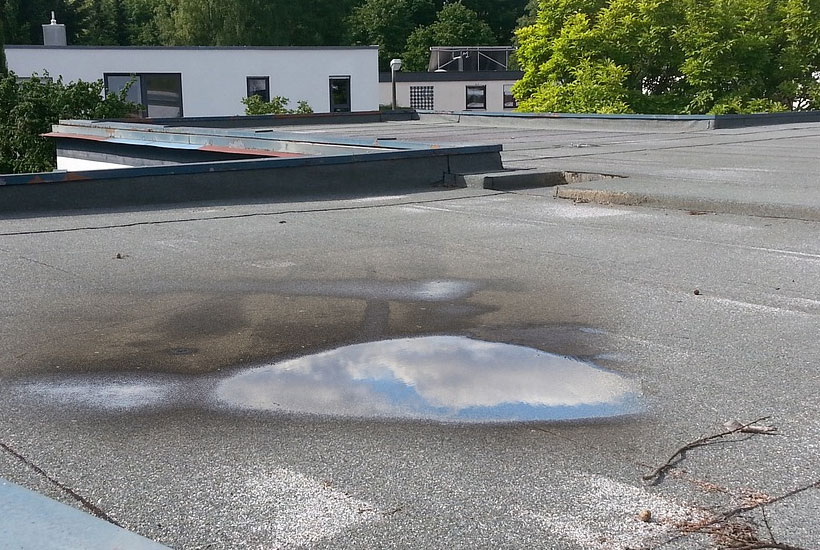Those small puddles or wide ponds of standing water on your roof could be a big problem. All flat roofs should completely drain rainwater within 24-48 hours after the rain has stopped, depending on the volume of rain. If you still have pools of water on your roof at that point, you have a ponding issue.
Here’s what you should do about water ponding on a flat roof.
Why Is Ponding on a Flat Roof a Problem?
Unfortunately, ponding is a common problem on flat roofs. Despite how common it is, ponding does need to be addressed, or it may cause more problems with your roof. Those problems may include:
- Premature failure: While flat roof materials can resist water for the short term, constant exposure to water can erode them just as it could erode river stones. Roofs that have standing water may leak or fail prematurely.
- Collapse: Water adds a significant amount of weight to a building’s structure. If there are large amounts of standing water constantly on the roof, there may be a risk of collapse.
- Ice damage: More damage can occur if the standing water freezes over. Expanding ice may force apart seams in the roof or damage the drainage system.
- Animal damage: Animals are always looking for space access to water. They may spend time on your roof to drink from the ponding.
- Safety concerns: If you or maintenance people walk on the roof, puddles of water are a slip hazard.
To avoid these problems, you should get a roofing professional involved with your roof as soon as possible.
What Will a Professional Do?
When a professional is called in for a ponding issue, they will inspect the roof. Typically, they will look for these things:
- Roof slope: While flat roofs may look flat, they have a small slope to direct water flow towards the drains. Without this slope, water may pond throughout the roof. Your roofer will make sure your roof is properly sloped.
- Drainage issues: If your roof drains are clogged or too small for your roof, you may develop ponding problems. Clogged drains must be unclogged and cleaned more often. If your drains are too small, you may need additional ones installed or a new siphonic drainage system.
- Sunken areas: Sunken areas of the roof may collect water. The roofing material in these spots needs to be removed and replaced.
- Extent of damage: After your roofer has determined the underlying cause of the ponding, they will also determine how much of your roof has been damaged by the issue and what repairs you need.
Your roofer should be able to tell you what is causing standing water on your roof and what kind of repairs you need to fix your ponding problem and prevent it from happening again. Once the problems are resolved, make sure that you keep your rooftop and drainage system free of debris. That’s the number one thing a homeowner or property owner can do to prevent ponding problems from happening again.

